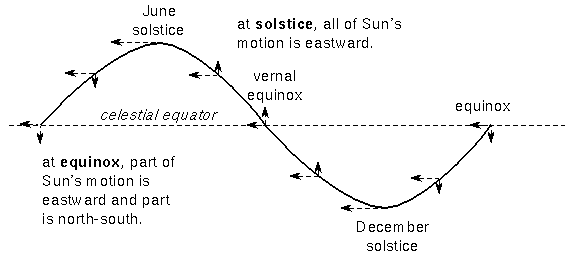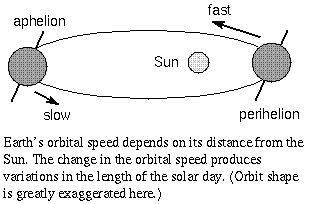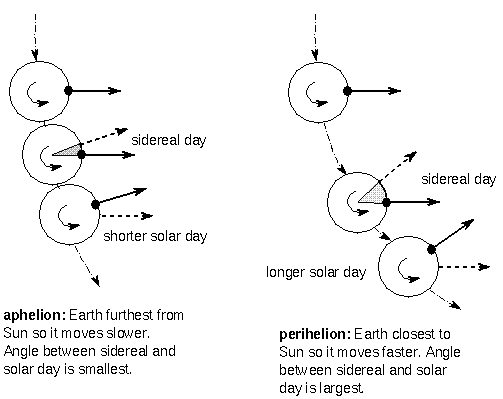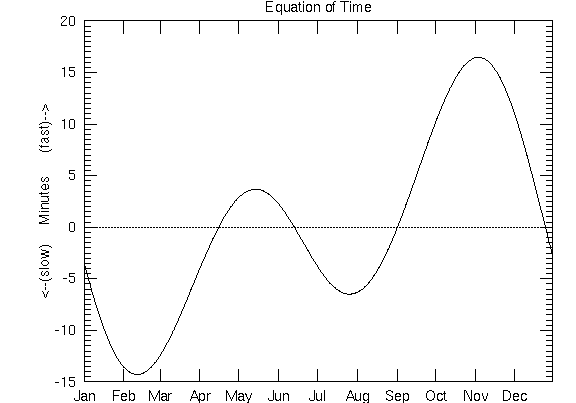
Video lecture for this chapter
There is a further complication in that the actual Sun's drift against the stars is not uniform. Part of the non-uniformity is due to the fact that on top of the general eastward drift among the stars, the Sun is moving along the ecliptic northward or southward with respect to the celestial equator. Thus, during some periods the Sun appears to move eastward faster than during others. Apparent solar time is based on the component of the Sun's motion parallel to the celestial equator. This effect alone would account for as much as 9 minutes difference between the actual Sun and a fictional mean Sun moving uniformily along the celestial equator.

 |
Another effect to consider is that the Earth's orbit is elliptical so when the Earth is at its closest point to the Sun (at perihelion), it moves quickest. When at its farthest point from the Sun (at aphelion), the Earth moves slowest. Remember that a solar day is the time between meridian passages of the Sun. At perihelion the Earth is moving rapidly so the Sun appears to move quicker eastward than at other times of the year. The Earth has to rotate through a greater angle to get the Sun back to local noon. This effect alone accounts for up to 10 minutes difference between the actual Sun and the mean Sun. |

However, the maximum and minimum of these two effects do not coincide so the combination of the two (called the Equation of Time) is a complicated relation shown in the figure below. The Equation of Time explains why, according to your clock, the earliest sunset and latest sunrise is not at the winter solstice. Yet, the shortest day is at the winter solstice. Rather than resetting our clocks every day to this variable Sun, our clocks are based on a uniformly moving Sun (the mean Sun) that moves along the celestial equator at a rate of 360 degrees/365.2564 per day. Aren't you glad that your watch keeps track of time for you?

![]() Go back to previous section --
Go back to previous section --
![]() Go to next section
Go to next section
last updated: January 18, 2022